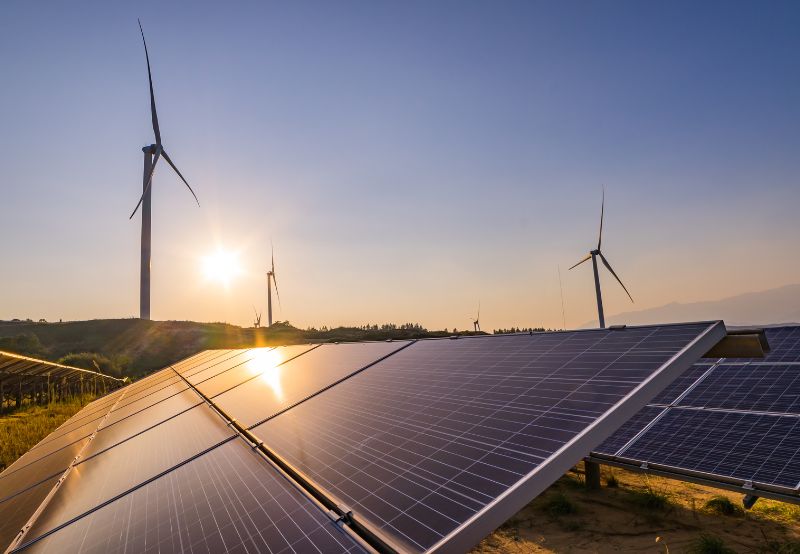Solar PPA Prices Stagnate in North America, Drop 5% in Europe: LevelTen
Wind PPA prices rose in North America but decreased in Europe
August 7, 2025
Follow Mercom India on WhatsApp for exclusive updates on clean energy news and insights
In the second quarter (Q2) of 2025, P25 solar prices, which are the 25th percentile of offered prices in power purchase agreements (PPAs), increased by 1% for North America, according to LevelTen Energy’s Market-Averaged Continental Index report.
This increase follows another modest growth in the previous quarter. LevelTen said this rise is surprising in an environment of considerable policy uncertainty.
While solar prices may appear unaffected, the pricing impacts of tariffs, tax credit shifts, and other factors are being incorporated through means other than direct price hikes.
The report stated that tariff and tax credit volatility makes it considerably difficult to fold in specific price impacts for PPA offers. An increasing number of PPA counterparties are choosing contractual mechanisms allowing future adjustments to prices and other terms.
LevelTen expects Q3’s dataset to help clear the impact of U.S. President Donald Trump’s spending bill.
Europe PPA Prices Down
P25 prices in Europe reduced by over 5% in Q2 2025 according to the report. This decline follows three quarters of stable trends, and it indicates that the considerable rise of recent years has levelled off. The levelling will offer PPA buyers enhanced clarity and improved conditions for decision making.
While further declines can be expected, the market currently offers a meaningful opportunity to secure long-term value without the urgency or volatility of the previous years.
A majority of European solar markets experienced declining pricing trends for solar PPAs. Italy, Romania, and Poland witnessed considerable reductions, partially due to an energy oversupply. Other markets with high offer volume, such as Spain and Germany, are seeing PPA prices reduce further since some developers in these countries are seeking customers for their pure-play solar assets. The developers are making this decision amid a wider market shift to hybridized development pipelines that leverage the storage systems’ synergistic performance benefits.
Wind Power
The P25 wind prices rose 11% during Q2 2025 in North America. Midcontinent Independent System Operator (MISO) wind prices increased significantly, quarter-over-quarter. This growth contributed the most to the rising continental pricing trend. However, prices in all North American wind markets, barring one, increased during this quarter.
The quarterly price growth was driven by a decline in the total offer volume and the long-term nature of wind development. Wind projects enter the market comparatively slower. In case of unfavorable market conditions or high regulatory uncertainty, developers often halt their marketing efforts till the situation improves.
In MISO, price sensitivity to shifts in individual projects increased due to limited offer activity.
The report stated that an increasing number of wind PPAs may remain on the back burner as developers continue to face issues such as permitting delays, interconnection hurdles, and policy volatility. This development would contribute to reduced liquidity and growing pressure on prices.
In contrast to North America, wind PPA prices across Europe reduced by 2%. According to LevelTen, despite a growing wind industry, the continent faces issues with land availability, permitting, and interconnection queues in many markets.
However, it stated that wind PPAs still provide attractive opportunities for consumers, particularly tech companies and data centers with significant clean energy requirements in non-sunny hours. Wind energy’s production profile makes it attractive for consumers as part of a broader procurement strategy.
In Q2 2025, the Greek wind market posted a P25 price to the LevelTen Price Index for the first time in two years. LevelTen stated that this posting indicates wind contracts are becoming increasingly available for offtakers that are active in the solar-heavy market.
Policy Uncertainty
Trump’s spending and tax bill, which was passed into law on July 4, 2025, repeals or substantially dilutes the 45Y and 48E tax credits for utility-scale wind and solar facilities under the Inflation Reduction Act.
The U.S. President signed an executive order directing the Secretary of the Treasury to terminate the clean electricity production and investment tax credits for wind and solar facilities and implement the enhanced foreign entity of concern restrictions identified in the ‘One Big Beautiful Bill’ Act.
In Europe, the new president of Poland, Karol Nawrocki, has previously criticized EU climate policies and supported coal. LevelTen expects a possible slowdown in the country’s climate progress under this regime.
Rising Electricity Demand
According to the report, tariffs, tax credit uncertainty, and other challenges do not affect the quickly rising U.S. power demand.
The growing number of data centers and rising heat waves are already testing the country’s power grid and load-serving entities, large players in the technology segment and corporate buyers have an increasing and near-term power requirement.
LevelTen cited Lazard’s Levelized Cost of Energy+ report, which states that wind and solar energy remain “the lowest-cost and quickest-to-deploy generation resource” even without the tax credits. In contrast, new gas generation costs are at a 10-year high.
Buyers in Europe are facing a new challenge, PPA prices that keep reducing, considering the value-eroding effects of cannibalization and other market concerns. Hybrid PPAs utilizing battery energy storage systems are attracting increasing interest in this environment, due to their capability to provide considerable performance benefits and support project financials.
According to the International Renewable Energy Agency’s report, global renewable energy capacity additions totaled 585 GW in 2024, a record 15.1% growth year-over-year, the highest annual increase since 2000. Renewable energy represented 92.5% of the new power capacity additions globally.
